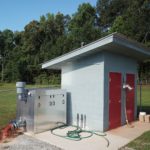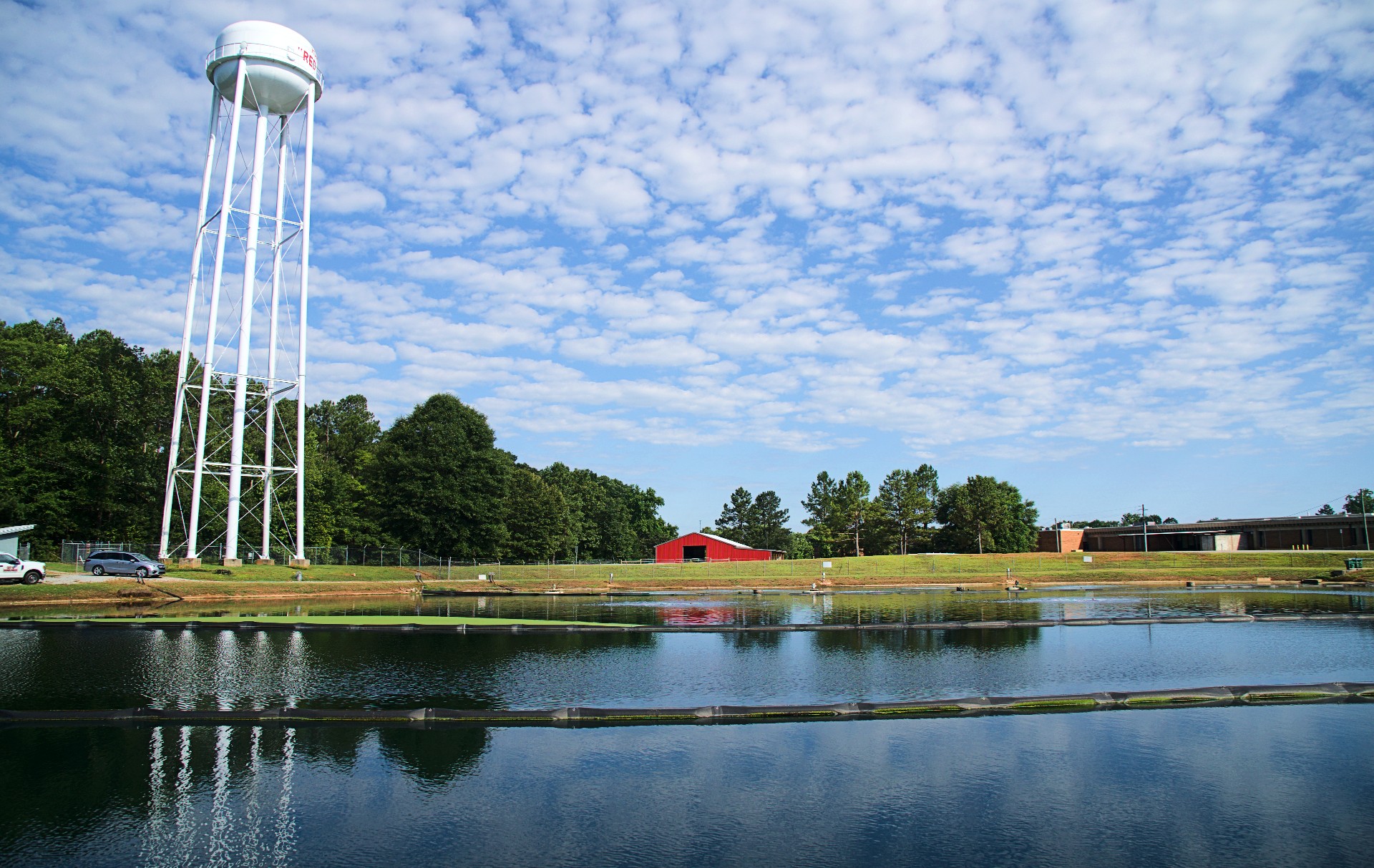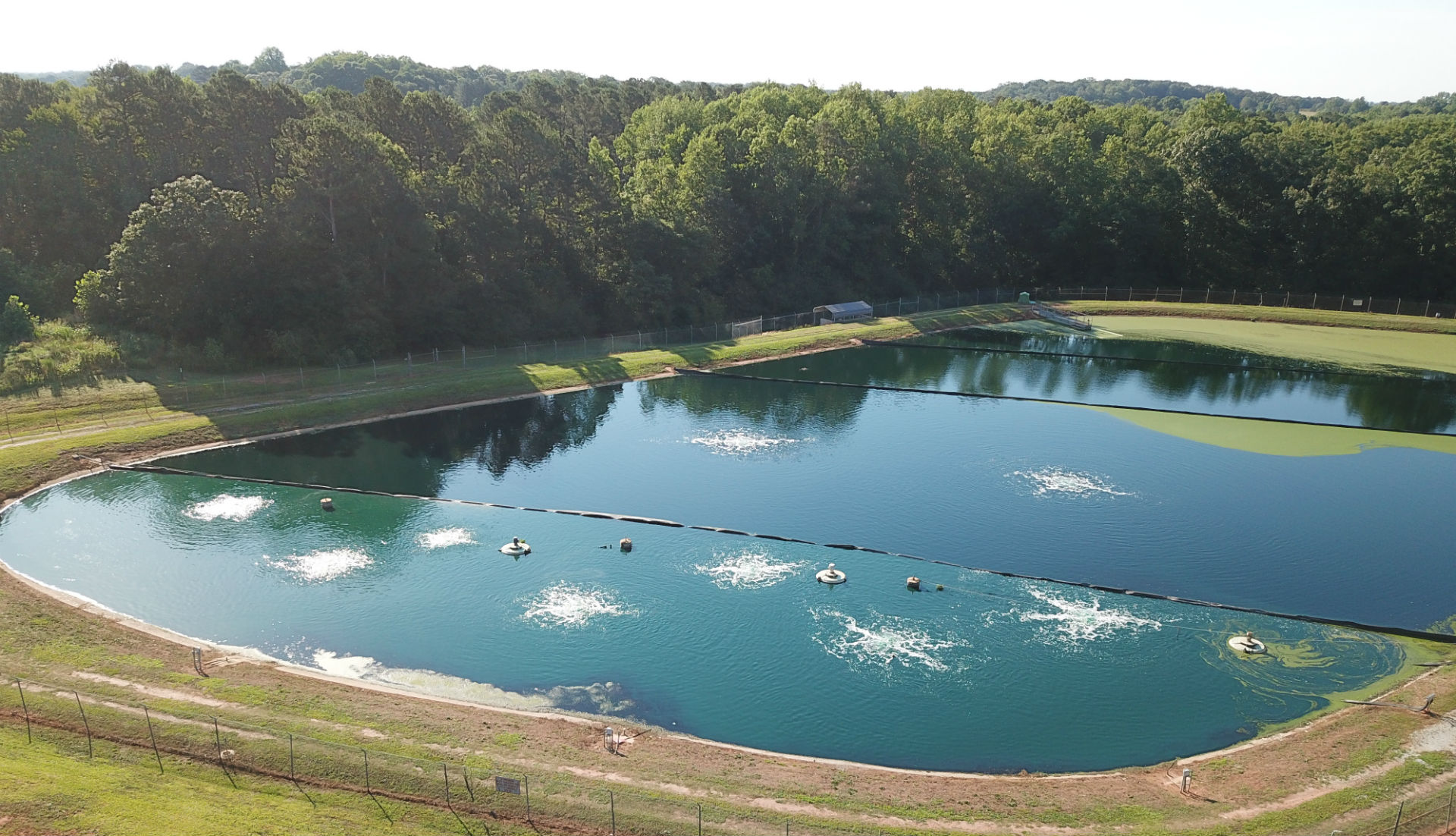A lagoon aeration upgrade can improve treatment and save thousands of dollars in energy, operations, and maintenance costs. Because Triplepoint aerators are portable, the retrofit can be completed with minimal operational disruption and leverage the existing blower and header infrastructure.
Watch our video case study and read below to learn how one Georgia city upgraded their lagoon aeration system, doubled their aeration efficiency, managed their sludge, and reduced maintenance in one fell swoop.
Pennywise and Pound Smart
The City of Danielsville, like over 300 other Georgia municipalities, treats its wastewater with a lagoon system. Lagoons are known for their low maintenance and simple operation, making them an ideal wastewater treatment solution for small communities like Danielsville. Most lagoon systems were built between 1970 and 1990 and, as a result, have old mechanical aeration systems that are relatively inefficient while also being maintenance intensive. Once Danielsville started to struggle with low Dissolved Oxygen (DO) and high Total Suspended Solids (TSS), they decided to look for a new system to upgrade their plant.
Oxygen Transfer Efficiency
Danielsville’s certified operator, Mike Sams from Environmental Management Services, identified that the DO and TSS issues Danielsville was experiencing were due, in large part, to the lack of oxygen transfer from their current aeration system. Therefore, one of Danielsville’s first criteria for picking a new technology was oxygen transfer efficiency—they wanted a system that could supply more oxygen without increasing power costs. Aside from mixing, the main purpose of an aeration system is to provide oxygen so that the metabolizing microorganisms within the lagoon can break down the organic matter (i.e. BOD). The existing splasher-type surface aeration system is known to provide between 1.5–2.25 lb/Oxygen/hp-hr; in other words, for every unit of horsepower that was operating per hour, Danielsville was seeing 1.5–2.25 lb/O2 transferred. More modern technologies, such as fine bubble aeration, are significantly more efficient. They operate using onshore blower units that are connected via air lines to the units on the bottom of the lagoon, and provide between 4–7 lb/O2/hp-hr— significantly more oxygen with less horsepower.
Patrick Hill, Lagoon Specialist from Triplepoint Environmental, said, “Immediately it became clear that utilizing a fine bubble diffused aeration system at Danielsville had the potential to improve oxygen transfer without increasing power costs.”
Sludge Management
Lagoons are designed to store sludge on the bottom and, eventually, this sludge needs to be removed, usually after 20–30 years of operation. Some of this sludge is organic matter (also known as volatile solids) that can be broken down in place and some of it is sand and grit, which must be removed. Typically near the influent point of a lagoon, 50% of the solids are volatile. Danielsville knew they had sludge buildup and that their existing surface aerators were not able to mix the entire water column. As a result, they were looking for a system to provide mixing/oxygen from the bottom up to help to reduce sludge levels over time. Reducing sludge buildup saves money by allowing the lagoon to go longer before requiring the expensive and disruptive process of mechanically removing sludge.
Simplifying Maintenance
The old surface aeration system was a challenge to maintain and service, with multiple motors on the water that had to be pulled in regularly for service and repair. “It was rare that we didn’t have a motor down, then we’d have to pull it in and send it for service,” says the Danielsville operator. “This was both costly and time consuming.” As a result, Danielsville decided that any new system they purchased would have all of the routine maintenance onshore, where it could more easily be accessed and time/cost could be reduced.
 Sams suggested Danielsville look at Triplepoint’s lagoon aeration system. Triplepoint’s dual action system utilizes fine bubble diffusers and a coarse bubble draft tube, all in one portable unit that sits on the bottom of the lagoon. “What I like about Triplepoint’s system is that you get the fine bubble oxygen transfer efficiency but also draft tube mixing,” says Sams. “Danielsville was able to get more oxygen transfer for the same power cost.” Moreover, the aeration units are fed by a single onshore blower, both reducing the total number of mechanical maintenance items from four to one, and also making maintenance more accessible. The nine portable aeration units were easily installed around the existing surface aerators, which were left in as backup system so the city didn’t have to purchase a redundant blower on day one. “The system was very easy to install,” says Alex Vimont from 3Point Service, the company who helped the city personnel install the system. “We put all nine units in the water in one day and had the system up and running in less than a week.”
Sams suggested Danielsville look at Triplepoint’s lagoon aeration system. Triplepoint’s dual action system utilizes fine bubble diffusers and a coarse bubble draft tube, all in one portable unit that sits on the bottom of the lagoon. “What I like about Triplepoint’s system is that you get the fine bubble oxygen transfer efficiency but also draft tube mixing,” says Sams. “Danielsville was able to get more oxygen transfer for the same power cost.” Moreover, the aeration units are fed by a single onshore blower, both reducing the total number of mechanical maintenance items from four to one, and also making maintenance more accessible. The nine portable aeration units were easily installed around the existing surface aerators, which were left in as backup system so the city didn’t have to purchase a redundant blower on day one. “The system was very easy to install,” says Alex Vimont from 3Point Service, the company who helped the city personnel install the system. “We put all nine units in the water in one day and had the system up and running in less than a week.”
Danielsville’s Lagoon Aeration Upgrade

By installing the Triplepoint Aeration System, the city was able to provide the lagoon facility with more oxygen and the required mixing at the same power cost. Moreover, Danielsville reduced maintenance costs by going from four surface aerators that are located on the water and replacing them with one onshore blower. Finally, due to the unique draft tube technology utilized with Triplepoint’s aeration system, sludge is better managed—as the organic component can be mixed and broken down in place—thereby reducing overall sludge levels.
To learn more about how a lagoon aeration upgrade with Triplepoint aeration can improve treatment and save thousands of dollars in energy, operations, and maintenance costs, download our Ares Aeration® brochure.

